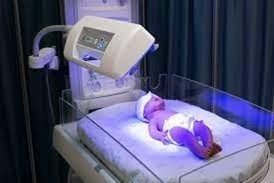A nurse is assisting in collecting data for a gestational age assessment on a newborn. Which of the following should the nurse check during a neuromuscular assessment? (Select all that apply.)
Scarf sign
Arm recoil
Moro reflex
Heel to ear
Popliteal angle
Correct Answer : A,B,C
Choice A rationale: The Scarf sign assesses the range of motion of the newborn's shoulder and elbow joint. It measures the ability of the newborn's arm to be brought across the chest.
Choice B rationale: Arm recoil measures the degree of resistance and recoil of the newborn's arm when it is extended and then flexed against the chest. This reflex provides information about the newborn's muscle tone and neuromuscular maturity.
Choice C rationale: The Moro reflex, also known as the startle reflex, is elicited by a sudden change in the newborn's position or by a loud noise. It involves an initial extension and abduction of the arms, followed by a flexion and adduction. This reflex helps assess the newborn's neurologic and neuromuscular maturity.
Choice D rationale: "Heel to ear" is not a standard neuromuscular assessment used in the gestational age assessment. It may be an incorrect or unclear term.
Choice E rationale: The popliteal angle is not a neuromuscular assessment used in the gestational age assessment. It measures the angle of flexion in the knee joint and is not directly related to neuromuscular maturity
Nursing Test Bank
Naxlex Comprehensive Predictor Exams
Related Questions
Correct Answer is A
Explanation
Choice A rationale: During phototherapy, it is essential to maintain adequate hydration and nutrition for the newborn. Encouraging frequent breastfeeding helps provide the baby with essential nutrients and fluids, which can be lost due to increased stooling caused by phototherapy.
Choice B rationale: The use of lotion on the newborn's skin during phototherapy is not recommended, as it may interfere with the effectiveness of the light therapy. The skin needs to be exposed to the light for the treatment to work.
Choice C rationale: Monitoring the newborn's blood glucose level is not directly related to phototherapy. Blood glucose monitoring may be necessary for specific medical reasons, but it is not a standard intervention during phototherapy.
Choice D rationale: During phototherapy, the newborn is usually placed in a supine (face-up) position to ensure maximum exposure of the skin to the phototherapy lights. The prone position is not recommended during phototherapy as it may reduce the effectiveness of the treatment.

Correct Answer is C
Explanation
Choice A rationale:
Maternal serum alpha-fetoprotein (MSAFP) determination is not used to screen for ABO incompatibility. It is specifically used to screen for certain fetal abnormalities.
Choice B rationale:
MSAFP determination is not used to screen for gestational diabetes. It is primarily used for detecting certain fetal abnormalities.
Choice C rationale:
The MSAFP test is a prenatal screening test that measures the level of alpha-fetoprotein in the mother's blood. Abnormal levels of alpha-fetoprotein may indicate a neural tube defect, such as spina bifida, or other chromosomal abnormalities.
Choice D rationale:
MSAFP determination is not used to screen for fetal maturity. It is used to assess the risk of certain fetal abnormalities.
Whether you are a student looking to ace your exams or a practicing nurse seeking to enhance your expertise , our nursing education contents will empower you with the confidence and competence to make a difference in the lives of patients and become a respected leader in the healthcare field.
Visit Naxlex, invest in your future and unlock endless possibilities with our unparalleled nursing education contents today
Report Wrong Answer on the Current Question
Do you disagree with the answer? If yes, what is your expected answer? Explain.
Kindly be descriptive with the issue you are facing.
